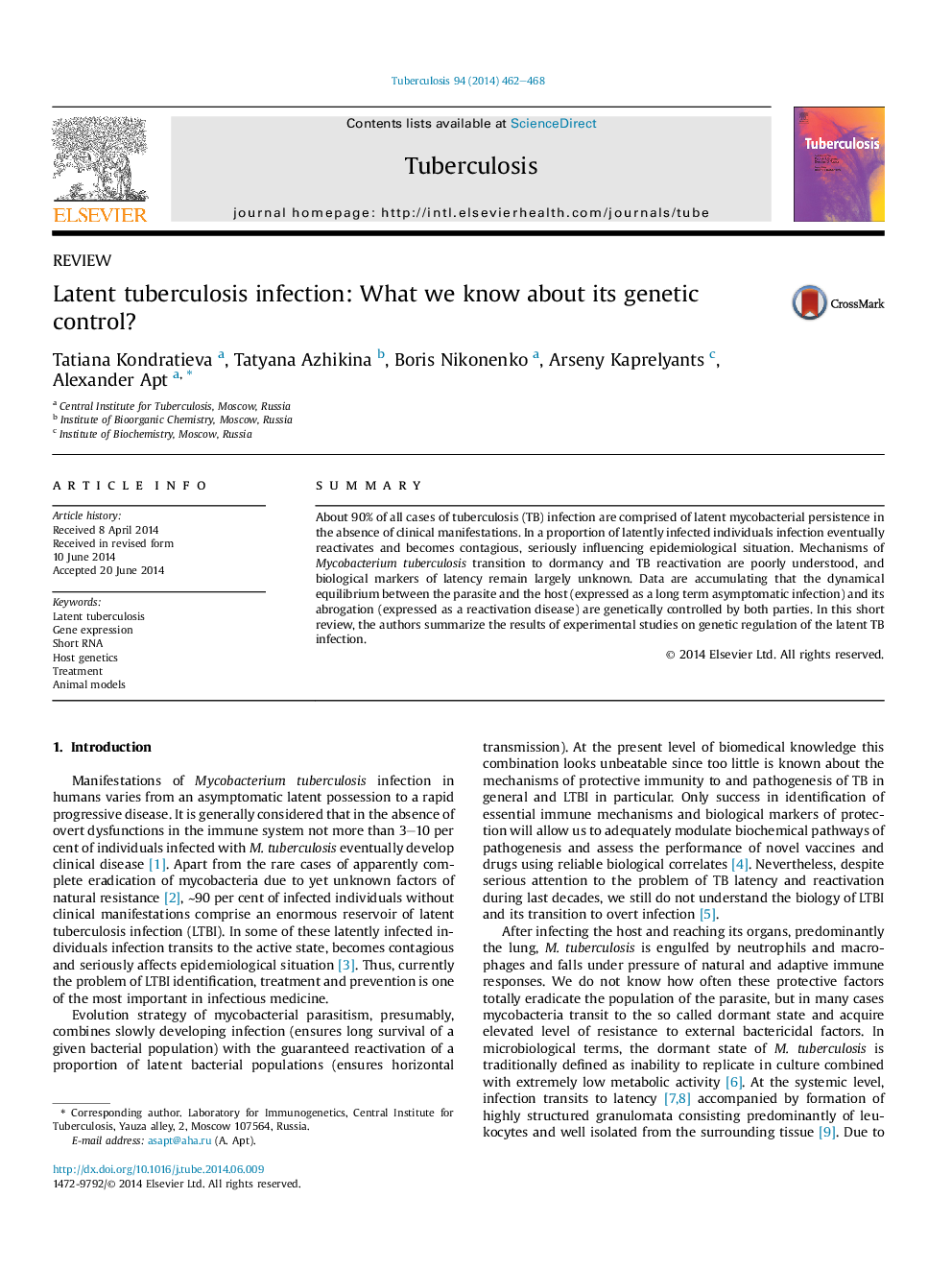| Article ID | Journal | Published Year | Pages | File Type |
|---|---|---|---|---|
| 2401554 | Tuberculosis | 2014 | 7 Pages |
SummaryAbout 90% of all cases of tuberculosis (TB) infection are comprised of latent mycobacterial persistence in the absence of clinical manifestations. In a proportion of latently infected individuals infection eventually reactivates and becomes contagious, seriously influencing epidemiological situation. Mechanisms of Mycobacterium tuberculosis transition to dormancy and TB reactivation are poorly understood, and biological markers of latency remain largely unknown. Data are accumulating that the dynamical equilibrium between the parasite and the host (expressed as a long term asymptomatic infection) and its abrogation (expressed as a reactivation disease) are genetically controlled by both parties. In this short review, the authors summarize the results of experimental studies on genetic regulation of the latent TB infection.
